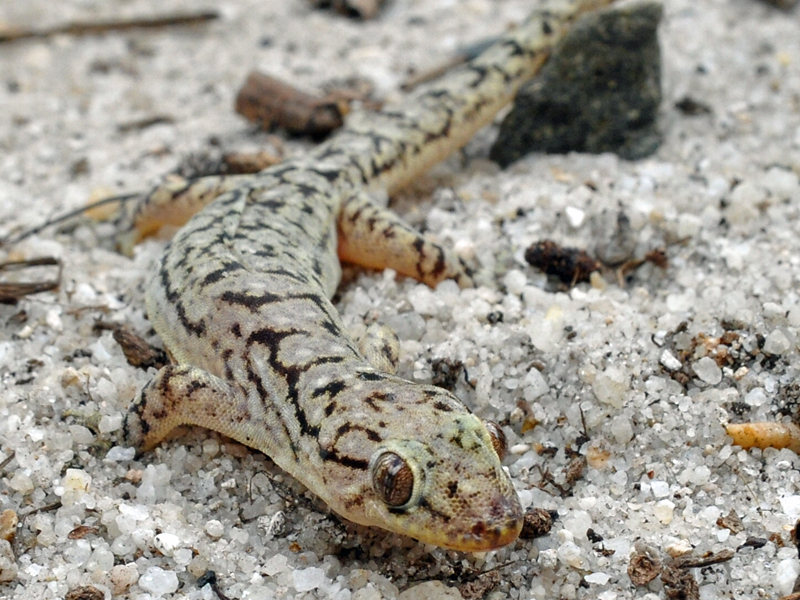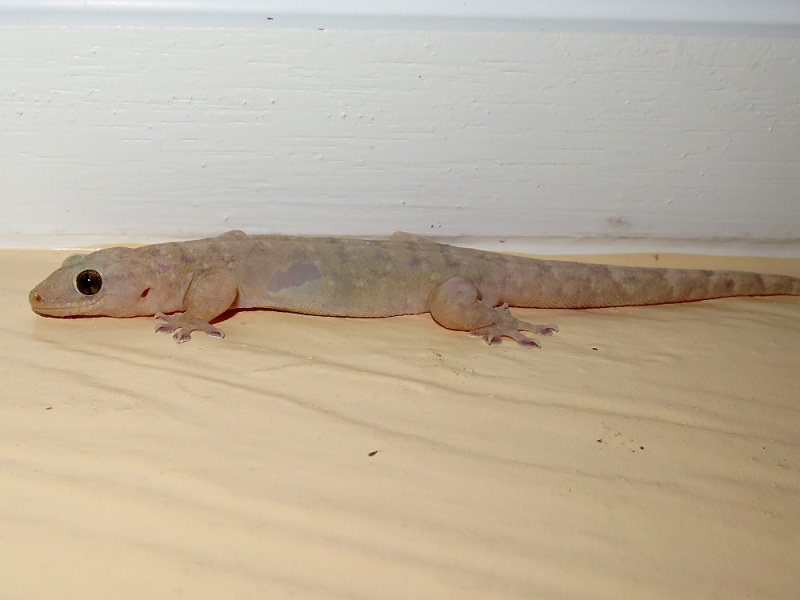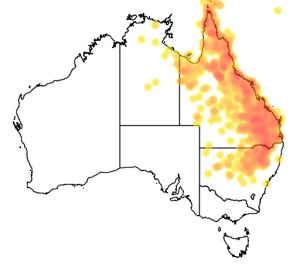
©Joseph Le Nguyen: Gehyra dubia photographed at the base of a tree on the edge of the beach adjacent to the Lizard Island Research Station. 15 June, 2012.
Colours
Distinguishing features
As with other Gehyra species, G. dubia has a large, semi-circular pad at the distal end of each digit. Except for the inner-most digit on each foot, each bears a claw that arises from the dorsal (top) surface of the pad. The color and pattern is variable, ranging from brown (especially in individuals in the trees) to pale, creamy grey (especially those in and around human habitations). All individuals have an irregular series of white spots along the dorsal surface of the body, each with a faint, dark area anteriorly. Some individuals have dark brown reticulations and spots.
Size
- Up to 6.5 cm (Length of specimen) - applies to ; up to 65 mm snout-to-vent length (SVL).
Synonyms
Similar taxa
-
Animalia:
species: Gehyra australis
It appears that Limpus (1982) misidentified specimens of Gehyra dubia as Gehyra australis.
Interesting facts
- Color and pattern vary among individuals, and noticably by habitat. Those on the porches of building at the research station tend to be quite pale, with little or no dark reticulations. Those on the trees are darker, and show stronger reticulations.
Distribution
Distribution and habitat preferences
Closely associated with human habitation and other buildings.
Also found in the trees along the beach front. It was also reported from the granite ridges on the island by Limpus (1982; as G. australis).
Local abundance
- Lizard Island, Queensland, Australia: This species is abundant and common on Lizard Island. It was among the eight most commonly sighted lizards reported by Limpus (1982; as Gehyra australis).
Behaviour
Active, nocturnal forager. Often found near lights on the porches and surrounding areas of the buildings at the Research Station. Also can be seen foraging on the trunks and lower branches of the trees along the beach front (Limpus, 1982). Among other places, shelters under loose bark on trees during the day.
Web resources
References
- Limpus, C.H. (1982). The reptiles of Lizard Island, Herpetofauna, 13(2): 1-6. LIRS catalog number 73.
- Wilson, S. and G. Swan (2010). A Complete Guide to Reptiles of Australia: 3rd Edition 558 pp. New Holland Publishers, Australia.













